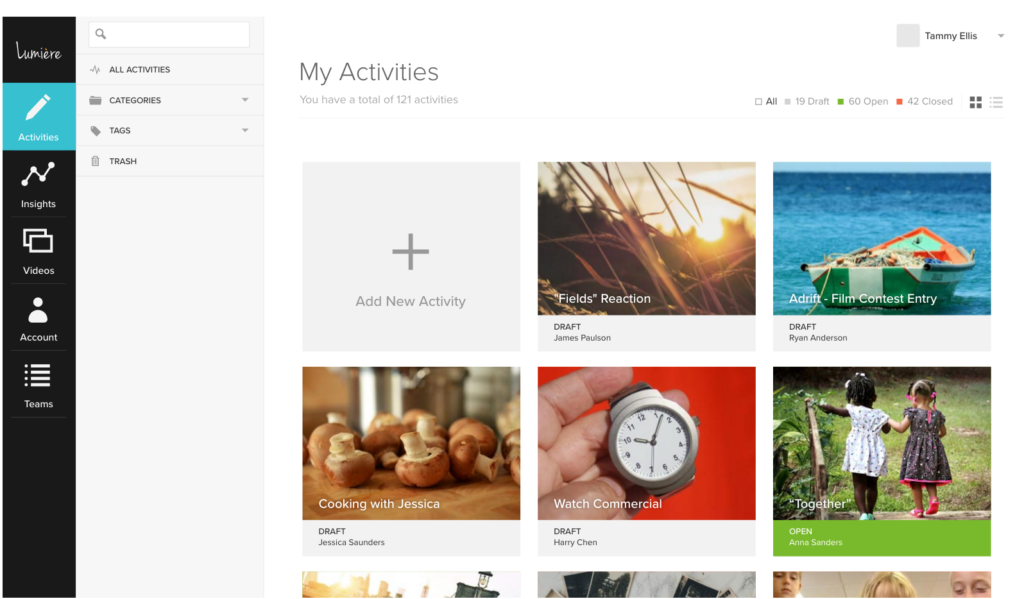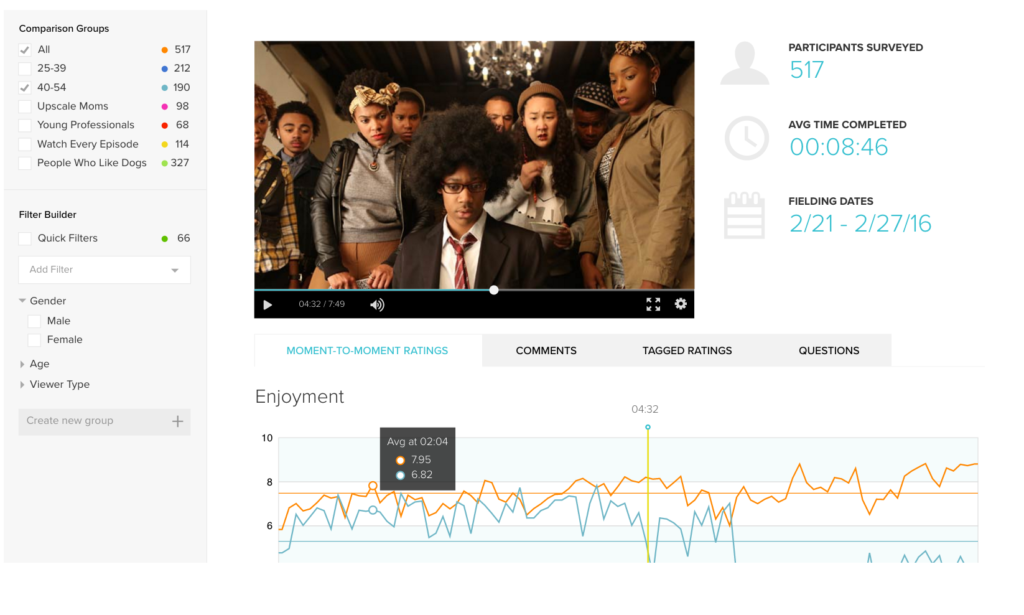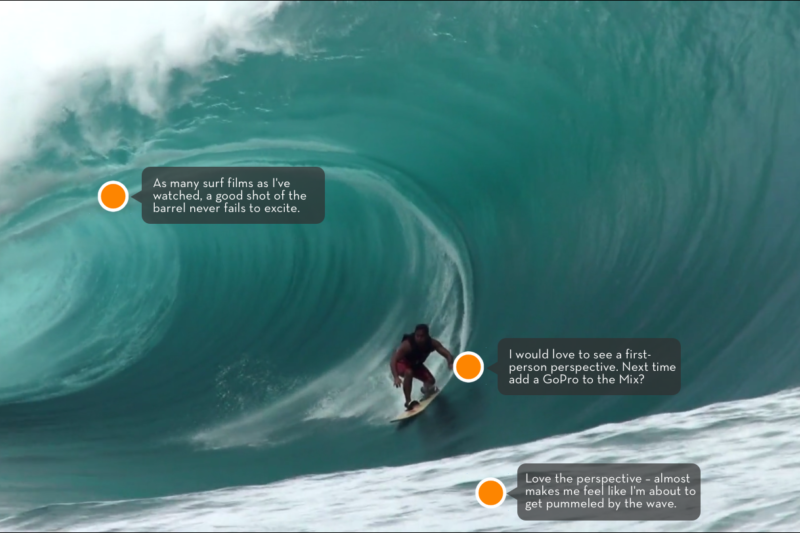Agencies, influencers, and B2B brands are creating more video content than ever. There are even more blog posts on the topic! Here are 3 elegant, clear things we recommend (and a collaboration platform) that will shore up your video content fundamentals.
If you’re reading this, you probably don’t need to be convinced of the increasing importance of video in any content marketing mix. (And if you need a little push, just search for “video content marketing stats” to get a sense of why video delivers such positive brand outcomes.)
While the costs to produce and distribute video have decreased dramatically, the fact still remains that forging a meaningful connection with your audiences, users, and customers through video is challenging, and a product of strategy, creative execution, and time. Without further ado, a few tips for crafting your video content strategy:
Know your audience
It’s easy to look at sales stats, customer segmentations, Web analytics, and other forms of quant data and conclude that you have a pretty good sense of who you’re catering to at a brand or product level. While these are undeniably useful tools, they’re often transactional in nature and provide a limited view of your customers.
Let’s face it: the people whom you’re trying to engage have lives that, for the most part, don’t revolve around you. Or, more positively, they’re multidimensional and interested in a lot of things that aren’t immediately related to you. A successful video content strategy will reflect that. Do you have a sense of how your brand could be present and relevant during the 99.99% of the time people aren’t actively thinking about – let alone transacting with – you?
The good news is, figuring out the broad strokes of your customers’ non-transactional selves – how they think and behave, what they pay attention to, etc. – can be done with resources already at your disposal. For instance:
- Customer service: There’s nothing better than talking to your customers to understand who they are as people. Better yet, make sure your customer-facing teams have regular opportunities to interact with marketing and bring their front-line customer knowledge into the mix.
- Social media: Select a sample of your followers and fans (need not be a huge sample) and use them as a listening post. What are they watching, talking about, and sharing, broadly speaking? You don’t need to bite on every passing trend, but surfing the zeitgeist from time to time is never a bad bet.
- Look within: It’s almost a certainty that a number of your colleagues are also buyers of the products or services you sell. Sure, they might not be completely dispassionate, but they do know what they like and pay attention to, and they have a vested interest in seeing you succeed from both sides of the aisle.
Create with purpose
Now that you have a sharp sense of who your customers are as people, it’s time to start thinking about what to produce. Before rushing to dust off the camera and start filming, it’s critical that you establish a clear set of goals to help guide your production and distribution processes. For instance, are you looking to:
- Generate visibility and general awareness? You probably want to avoid leading with video that’s feature- and/or benefits-driven. This is an opportunity to express your brand in human, emotional terms. Save the product details for another time and focus on telling a story that creates resonant, positive associations between your brand and viewers. Think “branded entertainment.”
- Increase sales velocity? Focus on telling a story about the problems or needs/wants that your product or service addresses – and how your product or service addresses them uniquely. Remember, your competitors can tell the “better, cheaper, faster” story just as well as you, so focus on what makes you distinctly valuable.
- Nurture your customers? Just because people know you and have been customers in the past doesn’t mean your job is done. Create videos positioned exclusively for them – whether tips and tricks, sneak peaks at new product lines, interviews with VIPs, or other content that acknowledges their value to you (and your continuing value to them).
Let the crowd make you a little wiser
At this point, you’ve built a great video around a compelling story. You’ve figured out which channels to employ to get the most visibility and buzz. Now it’s time to launch, right? Well, you could. Or you could invite a group of your customers, followers, fans, or all of the above to weigh in on your creative and tell you how to improve it. Remember: you’re expert in your products and services, but the people you’re trying to engage are expert in what they like and how they prefer to “spend” their limited attention.
So how do you do this? Well, tools like Lumière make it easy to generate rich viewer feedback in a few simple steps:
- Step one: Upload the video or videos you’re interested in testing.

- Step two: Build an interactive screening activity. Determine what kinds of feedback you’d like to collect: second-by-second ratings, ratings and comments tagged to specific elements of your video, structured question responses, viewing behaviors (what viewers skip, re-watch, choose to watch if presented multiple videos), or a combination.
- Step three: Send a link to your interactive screening through social media, email marketing, or any other distribution platform. Your participants react to your video and provide feedback through whichever mechanisms you’ve enabled.

- Step four: Explore your analytics to find out how viewers think, feel, and react to your video — what they love, what seems to be falling flat, and what you can do to optimize before launch.

[Disclaimer: My company, Latitude Labs, is the creator of Lumière.]
Publish, distribute, and measure
Now you have a really great video, battle tested, improved, and ready to launch. Before you do, make sure you have the right tracking and analytics solutions in place (probably a topic best left for its own post) so you can gauge the performance of your video in the wild.
At the most basic level, is your video getting views — and through your site or 3rd party embeds? Is it being viewed to completion or abandoned part-way through? Are viewers taking follow-up action – for instance, visiting your site or specific product pages; sharing over social media; posting it on their own sites/blogs; etc.?
If it seems like your video isn’t achieving the level of engagement you’d expect, try another round of testing in Lumière to diagnose why that might be. It’s never too late for a mid-course correction.
Before letting you go…
These are all broad-stroke guidelines, of course, but successful video campaigns rarely happen by accident. A strategic framework won’t ensure blockbuster outcomes, but it can help focus creative efforts and make sure you’re working toward a clear target.
Ian Schulte, CEO of Lumiere, an industry leading video collaboration and insights platform for agencies, influencers, creators, and media companies.




